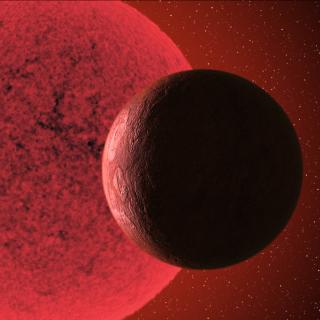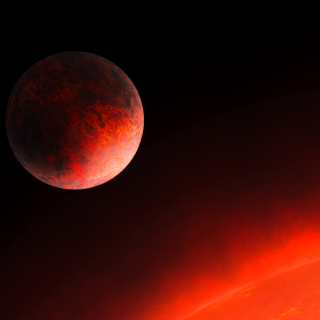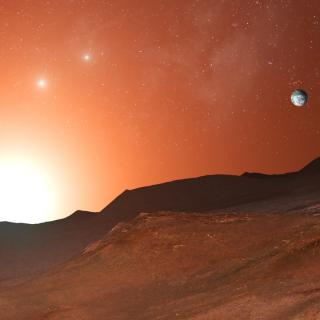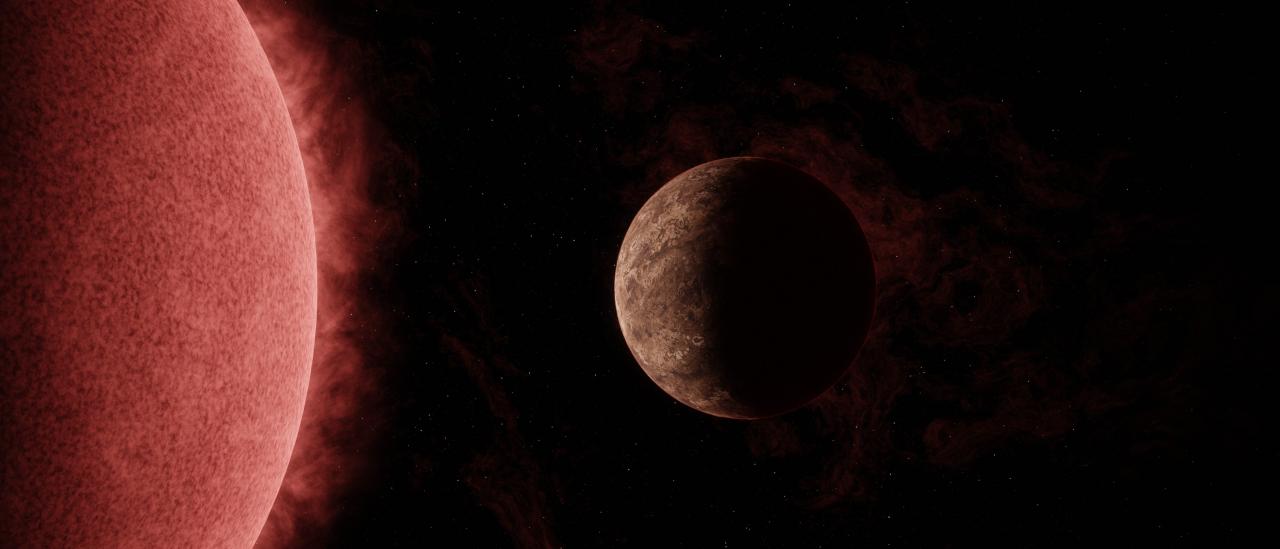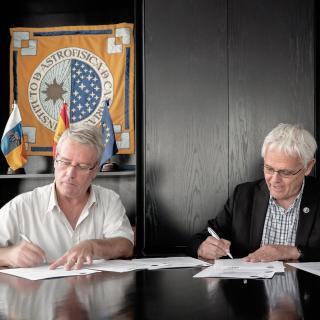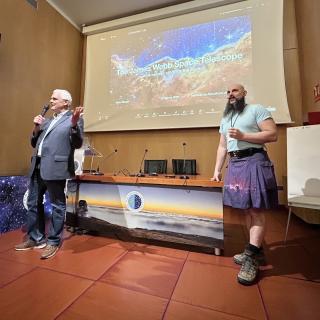An international scientific team, with the participation of researchers from the Instituto de Astrofísica de Canarias (IAC), has found a new world similar in size to our planet orbiting an ultra-cold red dwarf located about 55 light-years away. Observations from the SPECULOOS telescope network, which includes the ARTEMIS telescope at the Teide Observatory in Tenerife, have made this discovery possible. The Gran Telescopio Canarias (GTC), at the Roque de los Muchachos Observatory on La Palma, has also played a key role in confirming the discovery, providing some of the most accurate ground-based measurements of an exoplanet to date. The result is published in the journal Nature Astronomy.
More than 70% of the stars in the Milky Way are M dwarfs, also known as red dwarfs. These stars are cool and dim compared with our Sun, and those ‘‘lives’’ last a long time. Stars like our Sun burn for about 10 billion years before turning into hungry red giants devouring any planets too nearby. M dwarfs keep burning for 100 billion years or more, perhaps offering a foothold for life, and an even longer window for life to develop.
Among the red dwarfs, the so-called ultra-cool dwarfs form a group of even less bright and longer-lived low-mass stars. In fact, because of the slow rate at which they burn their fuel, they are thought to be the last stars burning when the Universe grows cold and dark. According to models, these ultra-cool dwarfs should harbour large populations of nearby, potentially habitable rocky planets. A well-known example is the seven-planet TRAPPIST-1 system.
In our corner of the galaxy, ultra-cool dwarf stars are ubiquitous, but they are so faint that their planetary population is largely unexplored. You need to observe them one by one, for weeks, to get a good chance to detect transiting planets. Now, thanks to a specialised array of professional telescopes called SPECULOOS (Search for Planets EClipsing ULtra-cOOl Stars), an international scientific team has discovered an Earth-sized planet orbiting one of these stars.
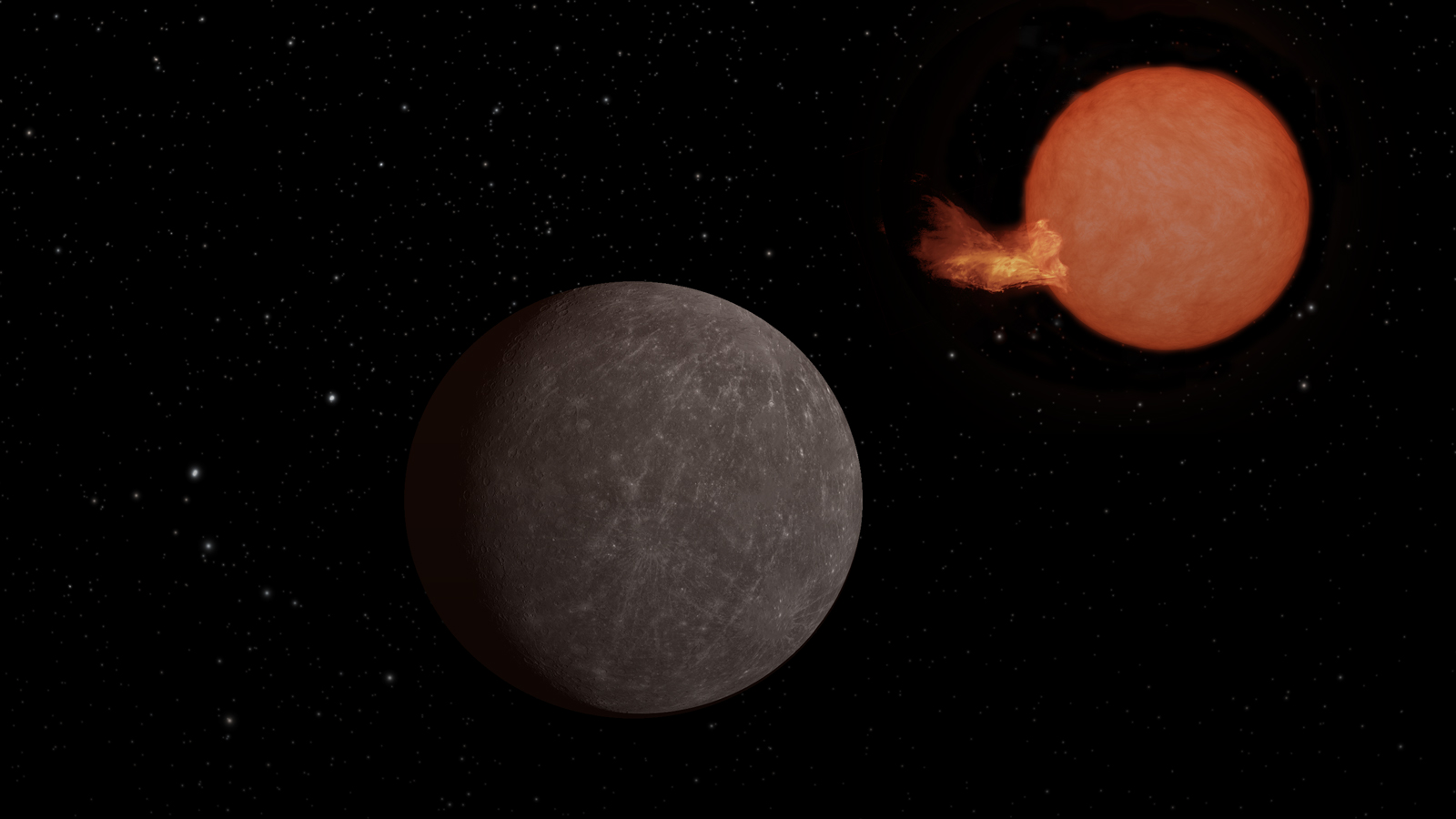
"We designed SPECULOOS specifically to explore nearby ultra-cool dwarf stars in search of rocky planets," says Michael Gillon, a researcher at the University of Liège (Belgium), first author of the article and principal investigator of the SPECULOOS project, which involves telescopes located all over the world, including the ARTEMIS telescope at the Teide Observatory.
A sun that heats too much
The discovered exoplanet, named SPECULOOS-3 b, is located about 55 light years from Earth and nearly the same size. A year there, one orbit around the star, takes about 17 hours. The planet is thought to be tidally locked, so the same side, known as the dayside, always faces the star, like the Moon to Earth. The nightside would be locked in neverending darkness.
The SPECULOOS-3 star is just a tad bigger than Jupiter – but much more massive. It is also thousands of degrees cooler than our Sun with an average temperature of about 4,760 F (2,627 ºC). However, its radiation heats the planet, which receives almost 16 times more energy per second than the Earth receives from the Sun, meaning there’s likely no atmosphere. "Though this particular red dwarf is more than a thousand times dimmer than the Sun, its planet orbits much, much closer than the Earth, heating up the planetary surface,” explains Gillon.
The Gran Telescopio Canarias (GTC or Grantecan) has played an important role in confirming this finding, providing some of the most accurate ground-based measurements of an exoplanet to date. SPECULOOS-3 b is an excellent candidate for followup observations by the James Webb Space Telescope. Not only might we learn about the potential for an atmosphere and about the surface mineralogy.
"We're making great strides in our study of planets orbiting other stars," concludes Roi Alonso, a researcher at the IAC and co-author of the article. "We have now reached the stage where we can detect and study Earth-sized exoplanets in detail. The next step will be to determine whether any of them are habitable, or even inhabited."
On behalf of the IAC, Felipe Murgas, Enric Pallé, and Rafael Rebolo also participated in the study.
Article: Michaël Gillon et al. “Detection of an Earth-sized exoplanet orbiting the nearby ultracool dwarf star SPECULOOS-3”, Nature Astronomy, 2024. DOI: 10.1038/s41550-024-02271-2
Contacto de prensa:
prensa [at] iac.es (prensa[at]iac[dot]es)

